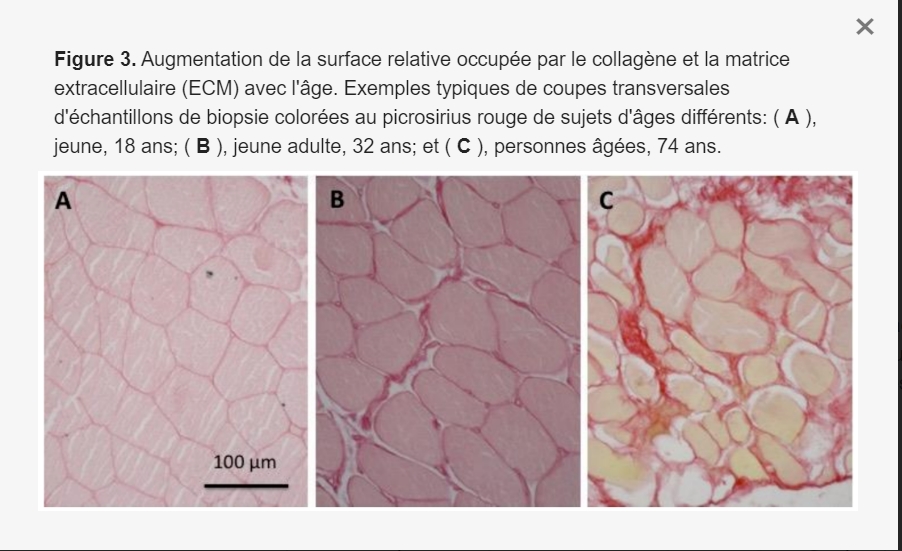Alterations of Extracellular Matrix Mechanical Properties Contribute to Age-Related Functional Impairment of Human Skeletal Muscles
by Piero Pavan Int. J. Mol. Sci. 2020, 21(11), 3992;
Aging of human skeletal muscles is associated with increased passive stiffness, but it is still debated whether muscle fibers or extracellular matrix (ECM) are the determinants of such change. To answer this question, we compared the passive stress generated by elongation of fibers alone and arranged in small bundles in young healthy (Y: 21 years) and elderly (E: 67 years) subjects.
The physiological range of sarcomere length (SL) 2.5–3.3 μm was explored. The area of ECM between muscle fibers was determined on transversal sections with picrosirius red, a staining specific for collagen fibers. The passive tension of fiber bundles was significantly higher in E compared to Y at all SL. However, the resistance to elongation of fibers alone was not different between the two groups, while the ECM contribution was significantly increased in E compared to Y.
The proportion of muscle area occupied by ECM increased from 3.3% in Y to 8.2% in E. When the contribution of ECM to bundle tension was normalized to the fraction of area occupied by ECM, the difference disappeared. We conclude that, in human skeletal muscles, the age-related reduced compliance is due to an increased stiffness of ECM, mainly caused by collagen accumulation.














